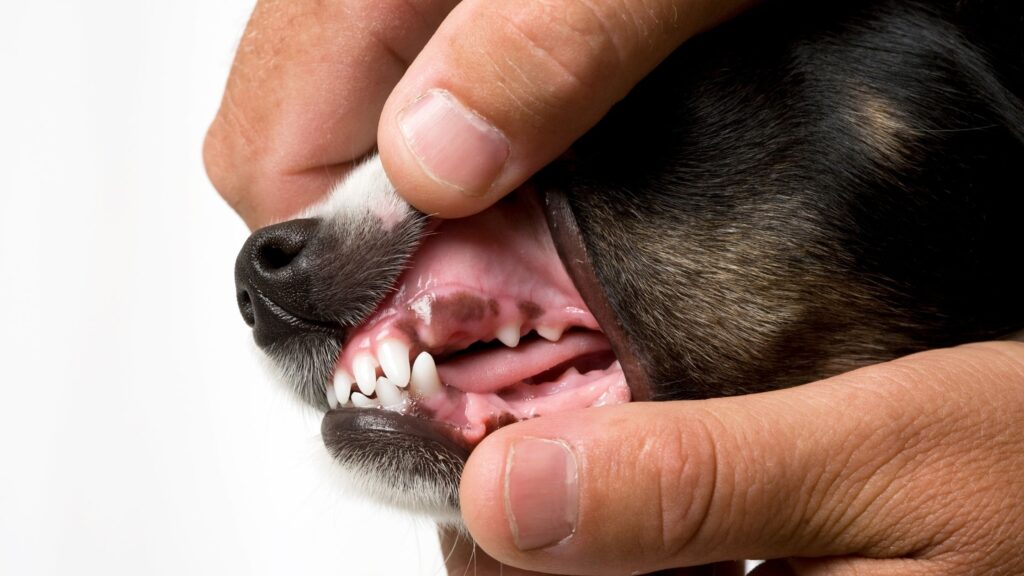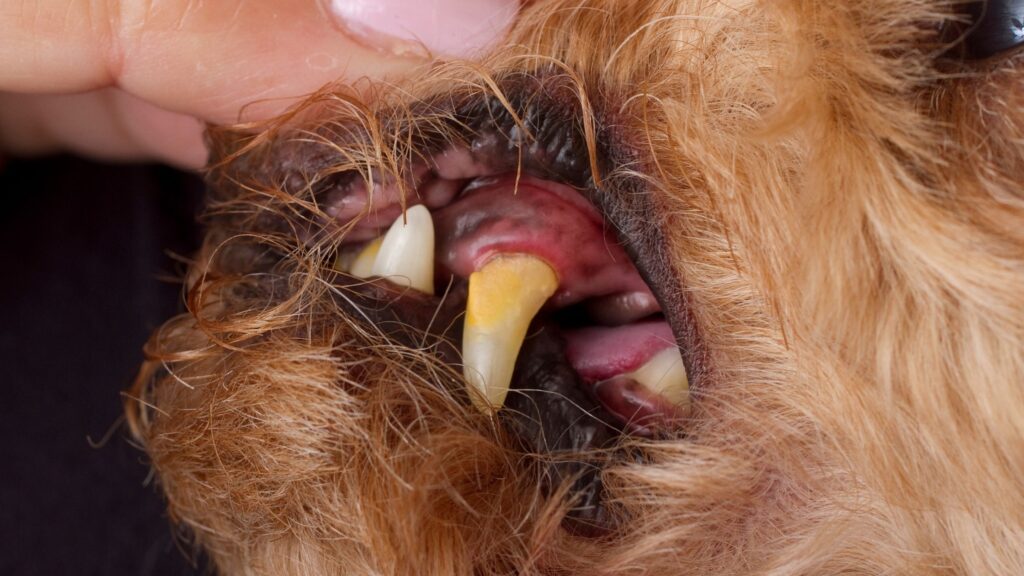What Color Should a Dogs Gums Be
At the top of your dog's teeth, you'll find a layer of soft and somewhat slippery tissue called gums. While they're often overlooked by pet parents, the color of your dog's gums actually provides a wealth of information about his health. In this article, you'll find out what normal gums should look like, how to assess your pup's gums, and what various colors could potentially mean.
What Should My Dog's Gums Look Like?
While the look of healthy gums varies a bit from dog to dog, for most, normal gums are bubble gum pink or salmon color and should be moist/a little slippery. But, get this: Some breeds have naturally black patchy pigmented gums (like the German Shepherd) or completely black gums (like the Labrador and Chow Chow).
To check if your pup's gums are healthy, you can do a quick and easy assessment at home. *Please note: If your pooch doesn't allow you to easily put your hands by or in his mouth then leave this for your veterinarian. He/she will know how to do it safely. Don't take a risk where you wind up getting bitten.
Assessing My Dog's Gums
- Gently lift your dog's upper lip to expose the gum area above his canine teeth (AKA the long pointy ones). Note the color.
- For dogs with pigmented gums, look in between … for the pink areas.
- Now, take your finger and gently press onto the gum for a couple of seconds. The pressure will displace blood from the area, turning it whitish in appearance.
- When you remove your finger you should see the blood rush back in within 1 to 2 seconds.
You've just checked your dog's Capillary Refill Time (CRT). This is the same test your human doctor performs when he briefly presses on your fingernail and then lets it go. Capillary refill measures the amount of time it takes for the displaced blood to flow back into the capillaries (AKA the tiny network of blood vessels in the gums). It's the quickest and simplest way to evaluate blood flow and dehydration.

For Dogs With Black Gums …
For dogs with black gums, as an alternate, check the color of the tongue or gently pull down the lower eyelid and take note of this color.You will not be able to do a Capillary Refill Test. NEVER press down on a dog's eyes or eyelid. Simply, take note of the color.
Normal Dog Gums
As I mentioned above, normal healthy gums are a bubble gum pinkish color and should be moist and a little slippery. Dry or tacky gums can often mean the dog is dehydrated.
Gum Colors and What You Should Know
Pale Gums:
Pale or whitish gums occur when the gum tissue isn't getting sufficient blood flow to the capillaries. This causes a lack of oxygen to the area. Possible causes are:
- Anemia
- Blood Loss
- Shock
- Low Blood Pressure
This is a definite cause for concern and you should call your vet asap.
Blue Gums:
Blue gums indicate a lack of circulating oxygen in the bloodstream. Possible causes:
- An underlying respiratory disease
- Heart disorder
- Carbon monoxide poisoning
- Ingestion of a toxin
If you notice your dog's gums are blue or purple – call your vet right away.
Red/Swollen Around The Gumline:
Redness and/or swelling around the gum line happens with gingivitis. With gingivitis, you may also notice bad breath. Depending on the severity, eating can become painful, and you may notice your pup rubbing at his mouth with his paws.
Gingivitis needs to be addressed with your veterinarian. The sooner you get a handle on gingivitis, the better chance you have to slow down its progression, decrease bone loss, and save the dog's teeth.
Left untreated it can lead to a host of health problems. Did you know by 3 years of age, 80% of dogs reportedly have some degree of periodontal disease? It all starts with gingivitis!

Bright Red:
Possible Causes:
- Gum Disease
- Infection
- Sepsis
- Fever
- Toxic Ingestion
- High Blood Pressure
- Overheated
- Heatstroke.
As you can see, there are multiple causes of bright red gums. They're also quite common in dogs with periodontal disease. With gingivitis and periodontal disease, you will likely notice other signs, such as bad breath, bleeding gums, receding gumline, loose teeth, pawing at the mouth, and other signs of pain and discomfort. In any case, if your dog has bright red gums, they are not normal and should not be ignored.
Red or Redish-Purple Spots:
Possible Causes: If you notice red or reddish-purple spots on your pup's gums, these could be petechia, which indicates a problem with blood clotting. Petechia are little bruises caused by small hemorrhages. If you notice them on your dog's gums, contact your vet right away. Be alert to other signs of bruising on Fido, as well as other signs of bleeding.
Yellow Gums:
Possible Causes:
- Destruction of Red Blood Cells (RBC's)
- Liver disease
- An obstructed bile duct
Yellow gums result from the pigment that's formed during the breakdown of Red Blood Cells. Inside the RBC is a protein called hemoglobin. When hemoglobin breaks down, the pigment bilirubin forms. High concentrations of bilirubin is what causes the yellowing appearance (AKA jaundice). If your dog has yellow gums, you'll probably also notice the whites of his eyes are yellow, as well as other areas of skin on his body. A dog with jaundice must be seen by the veterinarian immediately.
Know What's Normal for Your Dog
Take some time and become familiar with what's normal for your dog. That way, it will be easy to recognize if anything changes. If you notice any deviation from Fido's normal coloring or texture then get in touch with your vet to figure out what's going on!
What Color Should a Dogs Gums Be
Source: https://www.prouddogmom.com/color-dogs-gums-means/
0 Response to "What Color Should a Dogs Gums Be"
Post a Comment